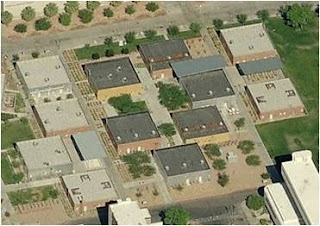•To produce renewable energy on UNLV’s most iconic building.
•To generate enough electricity to cover interior lighting demands and help reduce summer peak-load energy use on campus.
-----------------------BEFORE----------------------


------------------------AFTER----------------------


Metrics:
•Initial Cost: $818,250.00 *
•Installed PV Capacity: 146 KW
•Annual Energy Produced: 243,212 KWh
•Cost of Produced Energy: $0.339 per KWh
•Simple Payback: 30 years*
•Off-site energy savings: YES, 243,212 KWh per year
•Off-site water savings: YES, 1,763,287 gallons per year
* Excluding $120,000.00 Nevada Power rebate http://www.solargenerations.com/downloads/NetMeteringAgreement_NPC.pdf
Case Studies / Precedents:
•University of Buffalo
http://wings.buffalo.edu/ubgreen/energyforthefuture/energy/ubssystem.htm
http://www.buffalo.edu/buildings/building?id=norton
•Georgetown University
http://www.thehoya.com/news/032304/news7.cfm
http://www.geocities.com/Eureka/1905/GEORGETOWN.html









